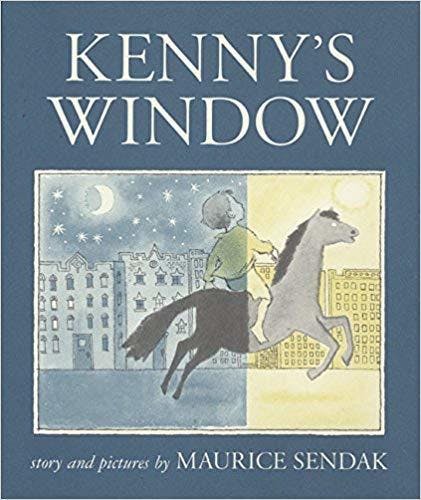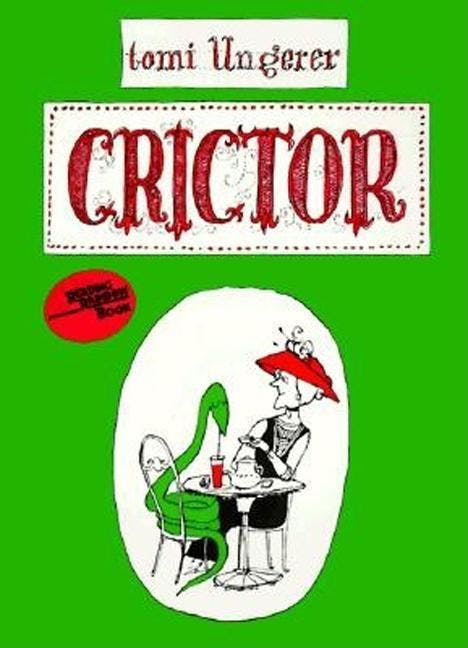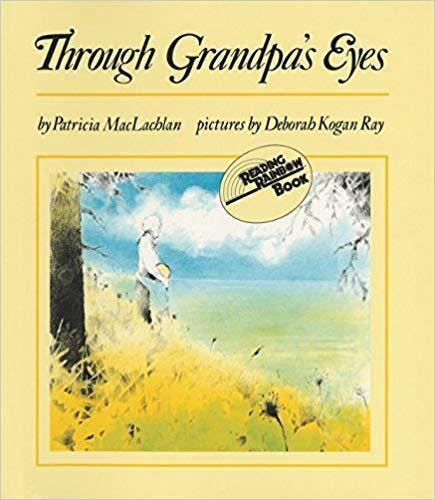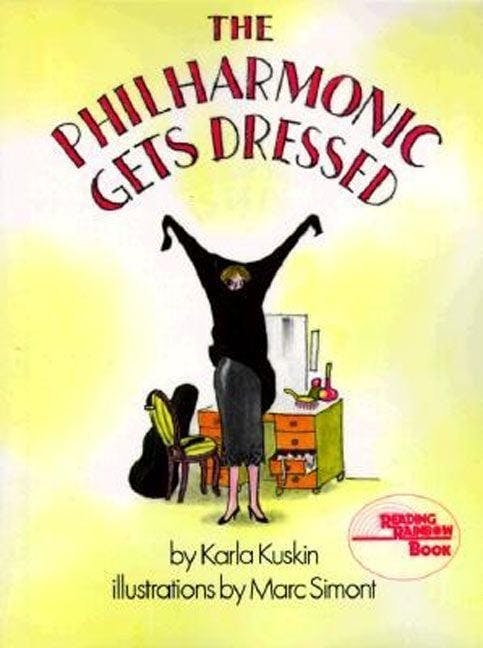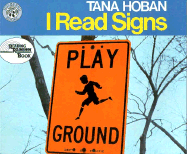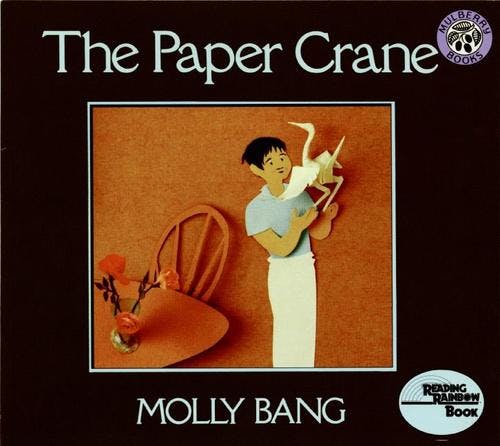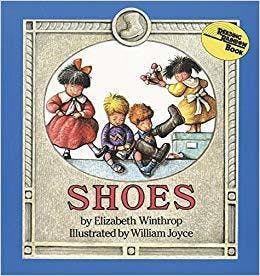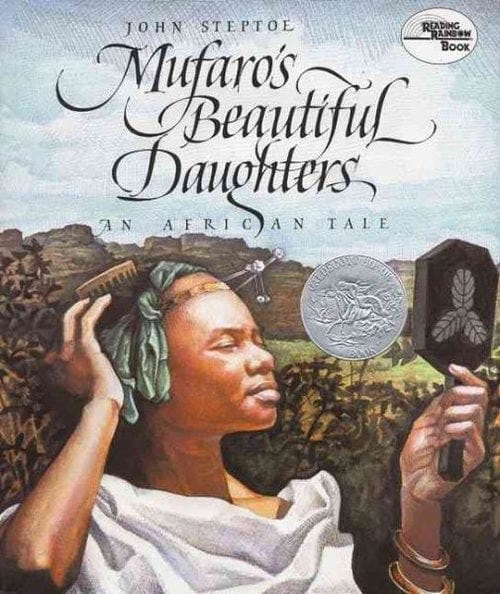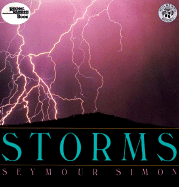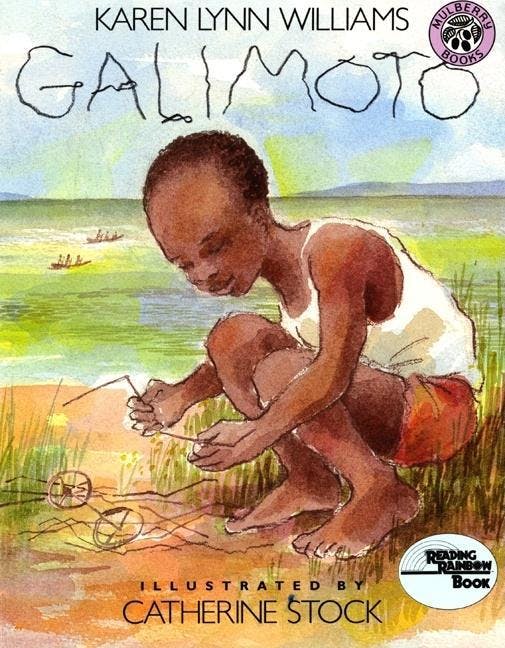Kenny's Window
Summary
Reading Rainbow Series
The Creatives Behind the Books
Maurice Sendak was born June 10, 1928, in Brooklyn, NY. He received the 1964 Caldecott Medal for Where the Wild Things Are. In 1970 he received the international Hans Christian Andersen Medal for illustration, and he remains the only American ever awarded this honor. In 1983, Sendak received the Laura Ingalls Wilder Award from the American Library Association, given in recognition of his entire body of work. He also received a 1996 National Medal of Arts in recognition of his contribution of arts in America. He illustrated over 80 books. He died May 8, 2012.
“Born in Strasbourg, in the Alsace region of France, in 1931, Tomi Ungerer started drawing as a small boy. He published his first book for children, The Mellops Go Flying, in 1957, and went on to publish 80 books over the next ten years, covering all aspects of his work. Phaidon has published many of his classics such as The Three Robbers, Moon Man, and Adelaide as well as new books for children such as Otto and the upcoming re-release of The Beast of Monsieur Racine, a star‐reviewed book in Kirkus 1963. In 2003 the European Council chose Tomi Ungerer as their first Ambassador for Childhood and Education and in 2007 the Tomi Ungerer Museum in Strasbourg opened its doors to the public and has since been voted one of the 10 best museums in Europe by the European Council. A contemporary of Maurice Sendak, Ungerer was recently featured in a documentary, Far Out Isn’t Far Enough, a New York Times Critics’ Pick.
James Stevenson has written and illustrated more than a hundred books for children.
Tana Hoban’s photographs have been exhibited at the Museum of Modern Art in New York and in galleries around the world. She has won many gold medals and prizes for her work as a photographer and filmmaker. Her books for children are known and loved throughout the world.
Molly Bang has written and illustrated more than twenty books for young readers, including When Sophie Gets Angry – Really, Really Angry… ; Ten, Nine, Eight; and The Grey Lady and the Strawberry Snatcher, each of which were Caldecott Honor books. Bang divides her time between Falmouth, Massachusetts, and Northern California.
With more than 60 fiction and nonfiction titles for children to her credit, Aliki has been delighting her many fans since her first book was published in 1960. Born in New Jersey, she now lives in New York City.Aliki’s books for young readers include the Let’s-Read-and-Find-Out titles Digging Up Dinosaurs, Fossils Tell of Long Ago, My Feet, and My Hands. Other nonfiction books by Aliki include How a Book Is Made, Mummies Made in Egypt, My Visit to the Aquarium, My Visit to the Dinosaurs, My Visit to the Zoo, Wild and Woolly Mammoths, and William Shakespeare & the Globe.
Patricia MacLachlan is a versatile and prolific author whose titles range from picture books to novels, including the Newbery Medal–winning Sarah, Plain and Tall. Barkus was inspired by the imagined adventures of her neighbor’s dog. She lives in Massachusetts
Laura Geringer is the author of many highly acclaimed books for children and young adults, including the celebrated A Three Hat Day illustrated by Arnold Lobel; Myth Men, a popular series of graphic novels based on the classic Greek myths; and Sign of the Qin, Book l of the Outlaws of Moonshadow Marsh series, an ALA Best Book for Young Adults; and Boom, Boom Go Away illustrated by Bagram Ibatoulline. She serves on the National Advisory Board of First Book, a charity that has distributed over seventy million books to children in need. Laura lives in New York City.
Elizabeth Winthrop has written over sixty books for readers of all ages. Her award-winning titles for children include The Castle in the Attic; Dumpy La Rue, illustrated by Betsy Lewin; and Shoes, illustrated by William Joyce. Her short story “The Golden Darters” was selected for The Best American Short Stories by Robert Stone. Under the name Elizabeth Winthrop Alsop, she is the author of the memoir piece Don’t Knock Unless You’re Bleeding: Growing Up in Cold War Washington. The daughter of Stewart Alsop, the political journalist, she divides her time between New York City and the Berkshires. Visit her at www.elizabethwinthrop.com.
John Steptoe was born in Brooklyn. From early childhood, he drew pictures and told stories with them. He started work on Stevie, his first picture book, when he was sixteen, and Stevie was published three years later to outstanding critical acclaim. Since then, he has written and illustrated many successful books for children. John Lewis Steptoe, creator of award-winning picture books for children, was born in Brooklyn on September 14, 1950 and was raised in the Bedford-Stuyvesant section of that borough. He began drawing as a young child and received his formal art training at the High School of Art and Design in Manhattan. He was a student in the HARYOU-ACT Art Program and instructed by the highly recognized African American oil painter, Norman Lewis. He also studied at the Vermont Academy, where he was instructed by the sculptor, John Torres, and William Majors, a painter acclaimed by the Museum of Modem Art for his etchings and print-making.His work first came to national attention in 1969 when his first book, Stevie, appeared in its entirety in Life magazine, hailed as “a new kind of book for black children.” Mr. Steptoe, who had begun work on Stevie at the age of 16, was then 18 years old.In his 20-year career, Mr. Steptoe illustrated 15 more picture books, ten of which he also wrote. The American Library Association named two of his books Caldecott Honor Books, a prestigious award for children’s book illustration: The Story of Jumping Mouse in 1985 and Mufaro’s Beautiful Daughters in 1988. Mr. Steptoe twice received the Coretta Scott King Award for Illustration, for Mother Crocodile (text by Rosa Guy) in 1982, and for Mufaro’s Beautiful Daughters.While all of Mr. Steptoe’s work deals with aspects of the African American experience, Mufaro’s Beautiful Daughters was acknowledged by reviewers and critics as a breakthrough. Based on an African tale recorded in the 19th century, it required Mr. Steptoe for the first time to research African history and culture, awakening his pride in his African ancestry. Mr. Steptoe hoped that his books would lead children, especially African American children, to feel pride in their origins and in who they are. “I am not an exception to the rule among my race of people,” he said, accepting the Boston Globe/Horn Book Award for Illustration, “I am the rule. By that I mean there are a great many others like me where I come from.”Mr. Steptoe frequently spoke to audiences of children and adults about his work. He was the 1989 winner of the Milner Award, voted by Atlanta schoolchildren for their favorite author.John Steptoe died on August 28, 1989 at Saint Luke’s Hospital in Manhattan, following a long illness. He was 38 years old and lived in Brooklyn. Mr. Steptoe was among the small handful of African American artists who have made a career in children’s books.
Seymour Simon has been called “the dean of the [children’s science book] field” by the New York Times. He has written more than 300 books for young readers and has received the American Association for the Advancement of Science/Subaru Lifetime Achievement Award for his lasting contribution to children’s science literature, the Science Books & Films Key Award for Excellence in Science Books, the Empire State Award for excellence in literature for young people, and the Educational Paperback Association Jeremiah Ludington Award. He and his wife, Liz, live in Columbia County in Upstate New York. You can visit him online at www.seymoursimon.com, where students can post on the “Seymour Science Blog” and educators can download a free four-page teacher guide to accompany this book, putting it in context with Common Core objectives. Join the growing legion of @seymoursimon fans on Twitter!
Deborah Kogan Ray has illustrated many books for children. She lives in Philadelphia, PA.
Mrs. Udry’s first book, A Tree Is Nice, illustrated by Marc Simont, won the 1957 Caldecott Award for the most distinguished American picture book. Mrs. Udry is also the author of Glenda, Let’s Be Enemies (also illustrated by Maurice Sendak), Mary Ann’s Mud Day, The Mean Mouse and Other Mean Stories, and Thump and Plunk.
Arnold Lobel (1933–1987) was the award-winning author and illustrator of many beloved children’s books, including the classic I Can Read books about Frog and Toad, and the Caldecott Medal–winning Fables.
William Joyce does a lot of stuff but children’s books are his true bailiwick (The Numberlys, Rolie Polie Olie, Dinosaur Bob, George Shrinks, and the #1 New York Times bestselling The Fantastic Flying Books of Mr. Morris Lessmore, which is also his Academy Award–winning short film, to name a few). He lives in Shreveport, Louisiana. Talk to William Joyce and look at upcoming work at @HeyBillJoyce on Twitter and Instagram.
Catherine Stock is the illustrator of more than eighty children’s books, including Emily and Carlo and Vinnie and Abraham. After traveling around the globe, she now divides her time between France and New York.
James E. Ransome’s highly acclaimed illustrations for Before She Was Harriett received the 2018 Coretta Scott King Illustrator Honor. His other award-winning titles include Coretta Scott King Honor Book Uncle Jed’s Barbershop; Sweet Clara and the Freedom Quilt; and Let My People Go, winner of the NAACP Image Award. He frequently collaborates with his wife, author Lesa Cline-Ransome. Some of their titles include Game Changers: The Story of Venus Serena Williams, which received four starred reviews; My Story, My Dance: Robert Battle’s Journey to Alvin Ailey; and Words Set Me Free: The Story of Young Frederick Douglass. Mr. Ransome teaches illustration at Pratt Institute and lives in upstate New York with his family. Visit James at JamesRansome.com.






